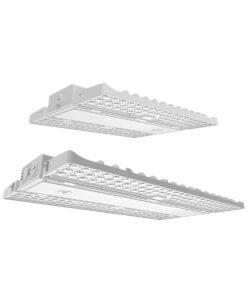
LED lights are increasingly getting popular for commercial and industrial applications due to their distinct qualities. Despite being more expensive than traditional light sources, LEDs are more robust, dependable, and require no maintenance. The most useful feature is their extended longevity, which may range between 50,000 and 100,000 hours. LEDs, when correctly constructed, can function in all temperate settings and are far more energy-efficient than traditional light sources. Continue reading to learn more about the top five advantages of LED lighting for industrial applications.
LED Lighting Return On Investment For Industrial Applications
However, there appear to be certain misconceptions about the use of LED industrial outdoor light applications. LED lighting is a cost-effective substitute for fluorescents, HIDs, and all other forms of industrial lighting, which industries should be aware of. As the initial cost of LED lights is slightly more than that of fluorescents, the price difference is only a one-time issue. Furthermore, they are energy-efficient, which means that enterprises that utilize LED lighting would have lower electricity bills.
Led Lighting Drivers That Are Well-Designed Do Not Fail.
Another significant advantage of LED lighting for industrial applications is that well-designed LED drivers do not fail during an LED’s functional lifespan. A driver or any other component would be unlikely to need to be changed. Furthermore, unlike traditional fluorescent or HID lighting fixtures, which have their usable lifespan drastically shortened by similar operations, frequent on/off switching does not diminish the useful life of a well-designed LED fixture. In reality, frequent switching increases the usable life of an LED by slowing the rate at which total operational hours accumulate.
LED Lighting Can Help Reduce Glare
Another advantage of LED lights for industrial applications is their ability to reduce glare. Many industrial buildings do not require a dazzling lighting system. LED lights are now well-designed to reduce glare. All high-output lights are quite bright. The glare fades fast after the novelty wears away. Furthermore, well-designed optics on LED lights reduce direct brightness and glare. Moreover, LED lights now have a color temperature that is ideal for industrial settings. See how LED lighting from Electro-Matic Visual saved Great Lakes Composites $50,000 per year.
LED Lighting Does Not Contain Mercury.
People commonly believe that LED lights contain mercury, as does fluorescent lighting, although LED lights are mercury-free and non-hazardous. They are effective in high-temperature situations. In reality, well-designed LEDs perform admirably in every setting. A well-designed lighting system that effectively regulates heat dissipation is required for lights to operate at any temperature—hot, cold, or anywhere in between. LED lights also function admirably in cold conditions.
LED Lights Do Not Require Upkeep
LED lighting does not require maintenance, contrary to popular belief. People believe that LED magnetic ballasts must be serviced and replaced on a regular basis. LED lights, on the other hand, have electronic drivers that do not need to be replaced. These drivers are now built to withstand any harsh environment. A magnetic ballast used in classic industrial lighting like HID, HIF, HPS, and metal halide wears out quickly and must be serviced or replaced.
Magnetic ballast service is highly expensive in big commercial and industrial establishments with hundreds of fluorescent or HID lights. LEDs, on the other hand, are semiconductors with electrical drivers that play a vital role in managing power supply and making the light energy efficient. Because LEDs employ electronic drivers, LED makers may incorporate control functions such as sensing, dimming, and immediate on/off into lighting fixtures for optimal usefulness and efficiency.


Disclaimer: PacLights is not responsible for any actions taken based on the suggestions and information provided in this article, and readers should consult local building and electrical codes for proper guidance.